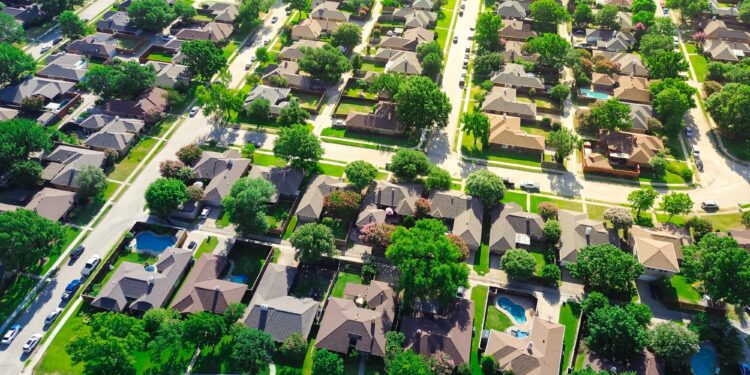A prolonged slowdown in US housing supply has made it increasingly difficult to afford a home, according to Goldman Sachs Research. Restrictive land use regulations are the most important housing market obstacle, and addressing these constraints could significantly close the gap in supply.
The muted housing growth since the Global Financial Crisis in 2007-09 can be seen in the sharp decline in the share of homes available for sale or rent, Goldman Sachs Research economists Elsie Peng and Pierfrancesco Mei write in a report. Today, both rental and homeowner vacancy rates—the share of total housing stock available for rent and sale respectively—are below those seen in the two decades preceding the crisis and the housing market collapse that triggered it.
These measures of housing stock availability point to a growing gap between supply and demand—the root of the affordability problem. Rents and mortgage payments are taking a bigger chunk of income, according to multiple measures, and the trend accelerated post-pandemic.
The home price-to-income ratio, for example, has surpassed the peak it reached in the 2000s housing boom, according to Goldman Sachs Research. Mortgage rates surged to a 20-year high in 2022 and have stayed elevated since. The average monthly mortgage payment as a share of potential home buyers’ income has risen from below 20% prior to the pandemic to a historically high ratio of over 30% since 2022. Affordability is less of a problem in the rental market, but still, the rent-to-income ratio of today is at its highest level since 1980, Peng and Mei note.
How big is the housing shortage?
Our economists looked at what it would take to restore price-to-income and rent-to-income ratios back to levels seen in the 1990s. They also assessed what would be needed to get vacancy rates back to where they were in that period.
Their analysis suggests that fixing the shortage and restoring affordability will require the addition of around 3-4 million housing units. That’s equal to about 2% to 2.6% of the current housing stock. Researchers elsewhere have estimated that the US housing shortfall is between 1.5 million and 5.5 million units, or as much as 3.7% of today’s supply of homes.












